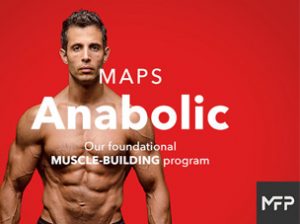The Ultimate Muscle-Building Blueprint: How to Train for Size and Strength
Jan 10, 2025 mindpumpBuilding muscle and strength isn’t complicated, but it does take consistency and the right strategy. Whether you’re just starting out or you’ve been lifting for years, the principles of progressive overload, exercise selection, and recovery remain the same. This blueprint is about training smart to maximize your gains.
Master Progressive Overload
We need progressive overload. Your muscles adapt to stress, so if you’re not gradually increasing the weight, reps, or intensity, your gains will plateau. Your goal is to challenge your muscles a little more each week. Add 5-10 pounds to your lifts, squeeze out an extra rep, or slow down your tempo for more time under tension. Just don’t overdo it. Quality beats quantity every time.
Exercise Selection
The foundation of your program should come from lifts like squats, deadlifts, bench presses, pull-ups, and rows. The benefit of these over isolation exercises like bicep curls and tricep pushdowns is that they hit multiple muscle groups at the same time. You won’t find many guys pushing big numbers in all those lifts who also don’t have an impressive physique. Isolation exercises should be used as a tool. Think of it as a way to add extra volume to the areas that you feel are lagging behind, and only add them in as needed.
Volume, Intensity, and Frequency
10-20 sets is the general rule when it comes to volume. That means, every week you are doing 10-20 sets, per muscle. That can be done on one day or split over 2-3 days. I prefer to spread them over at least two days so that you can hit as many of those exercises as possible while you’re fresh, rather than saving them for the end when that muscle is already taxed. Shoot for a reps in reserve (RIR) of 2-3. That means if you chose a weight for 10 reps, by that final rep you should feel like you only had 2-3 reps left in the tank. Another reason for splitting your work load on a given muscle over 2-3 days is that if you happen to miss a day (which happens), you don’t completely leave out an entire muscle that week. It also sends the muscle building signal more often to each muscle throughout the week.
Mind-Muscle Connection
If you want muscle to grow, you need to feel that muscle working. Think about just throwing your entire body into a bicep curl. You may SORT of feel it, but it may feel more like your whole body got tired. Now, slow down the rep so it takes 2-3 seconds to lower the curl coming down. You may notice now all the fatigue is directly in the biceps, and thus forces you to use less weight. That is a great mind muscle connection. You are trying to get the most out of each rep for growth.
Recovery is Non-Negotiable
Growth happens outside the gym. Sleep, nutrition, and stress management are just as important as your workouts. Aim for 7-9 hours of quality sleep per night. Fuel your body with high-protein meals, healthy fats, and carbs to replenish glycogen. And don’t underestimate the power of rest days.
Track Your Progress
Keep a log of your workouts. Write down the weights, sets, and reps for every lift. This isn’t just for tracking—it’s motivation. Watching your numbers climb over time is one of the best feelings as a lifter.
Consistency Beats Perfection
Finally, remember that consistency trumps perfection. Missed a workout? Don’t sweat it. Get back on track the next day. Progress isn’t linear, and setbacks are part of the process.
Follow this blueprint, and you’ll build muscle and strength while avoiding common pitfalls. Train with intention, recover like a champ, and enjoy the journey.







